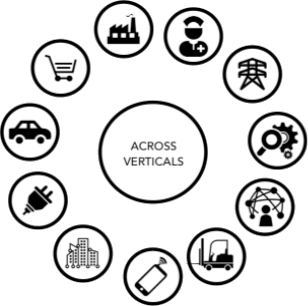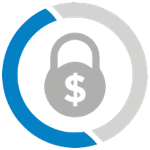About This Report
- The [x]cube Blockchain Landscape Report 2021 reflects the current state of Blockchain technology and its potential impact in the future.
- We begin the report talking about the impact blockchain has had in various industry verticals. This is followed by in-depth coverage on the core blockchain concepts. Afterwards, we talk about the regulatory framework existing for blockchain across the globe followed by its market prospects.
- Our report is geared towards industry participants, strategic planners, decision makers, product managers, and product owners among others.
- For the purpose of this report, [x]cube’s research team used a detailed secondary research approach to gather information on Blockchain technology.
About Us
![[x]cube LABS](https://d6fiz9tmzg8gn.cloudfront.net/wp-content/uploads/2021/08/blockchain-guide-xcube-logo.png)
Established in 2008, [x]cube LABS is a unique company at the intersection of strategy, creativity and technology, helping enterprises develop innovative digital products to transform customer engagement and business operations.
Located in the US, Europe and Asia, [x]cube LABS has worked with more than 30 Fortune 2000 companies and has developed a reputation as a high-quality partner for building digital centers of excellence, customer experience transformation and IoT implementations.
What is a Blockchain ?

A blockchain is a digital, distributed transaction ledger with identical copies maintained on multiple computer systems controlled by different entities.
Anyone participating in a blockchain can review the entries in it. But the blockchain can only be updated by consensus of a majority of participants. Once entered into a blockchain, information can never be erased!
What has Changed Over the Past Few Years ?

Our previous report introduced us to blockchain technology, mentioned 2017-18 as a period of experimentation and emphasized the challenges and benefits of implementing blockchain along with its potential business applications.
We forecasted 2019 to be a huge boost for Blockchain technology and Blockchain-based service providers as full-scale deployments took shape across the business spectrum.

2019 and 2020 witnessed the evolution of Blockchain from an underdeveloped technology to a technology that is well refined and poised to deliver on its initial promise of disruption.
During the past one year, blockchain image has shifted from being a niche and hyped technology to one that solves practical business problems.
Blockchain Use Cases Continue to Evolve

Innovative technologies have for long been explored by businesses, governments, and other organizations, leading to newer business models and ultimately creating value.
Like any new technology that has the potential to disrupt, enthusiasm towards blockchain technology continues to be universally similar as organizations and businesses alike continue to explore its potential business applications.
Financial services and, more specifically, the fintech sector leads in blockchain development, while other industries are cautious in their search for use cases to provide a return on investment to justify the cost and effort of implementing blockchain solutions.
Today, fintech remains a blockchain leader, but businesses in other sectors such as technology, media, telecommunications, life sciences and health care, and government - are expanding and diversifying their blockchain initiatives.
Summary
- Similar to how the first generation technologies disrupted the global economy in numerous ways, the second generation also promises to transform various industries fundamentally, and change how businesses operate.
- Driving this change is Blockchain - often referred to as distributed ledger technology. Blockchain is the technology which is enabling cryptocurrencies such as bitcoin and Ethereum. It is moving the world into a new dawn of trust, decentralization, and global inclusion.
- In our 2019 Blockchain Landscape report, we have noted that Blockchain was still in a state of experimentation. However, 2019 saw the evolution of Blockchain from an underdeveloped technology to a technology that is well refined and poised to deliver on its initial promise of disruption. During the past one year, blockchain image has shifted from being a niche and hyped technology to one that solves practical business problems.
- Innovative technologies have for long been explored by businesses, governments, and other organizations, leading to newer business models and ultimately creating value. Like any new technology that has the potential to disrupt, enthusiasm towards blockchain technology continues to be universally similar as organizations and businesses alike continue to explore its potential business applications.
- While financial services is the leading sector in blockchain development, other industries have taken a cautious approach in finding the right use cases which provide a return on investment required to justify the high cost of implementing blockchain solutions.
- However, we expect 2022 to be the year when full-scale blockchain deployments take shape across the business spectrum.
Table of Contents
1. Industry Adoption
- Financial Services
- Healthcare & Life Sciences
- Media & Entertainment
- Retail
- Energy
- Logistics & Transportation
- Public Sector
2. Introduction to Blockchain
3. Regulations
- China
- United Status
- European Union
- Malta
- Japan
- Australia
- India
4. Market Prospects
5. ABOUT [x]cube LABS
Financial Services

Cross Border Payments
- The transfer of value has always been a slow and expensive process. This is particularly true in the case of cross-border payments
- Most international payments systems pass payments through multiple banks en route to the final destination. Though this process ensures security benefits, it also makes the money transfers slow, expensive and uncertain— the amount of money that will arrive at the receiver’s end is unknown until the payment is actually received
- Blockchain technology can simplify and speed up the current cross border transaction process by cutting out many of the traditional middlemen. At the same time, money remittance becomes more affordable through this process
- The costs of remittance which were 5%-20% until now will reduce to 2%-3% of the total amount via blockchain transactions and also provides guaranteed, real time transactions across borders
Startups in this Space




Trade Finance
- Around 80% - 90% of global trade relies on trade finance. Trade finance transactions usually include lending, issuing letters of credit, factoring, insurance and export credit and these transactions make up a huge portion of the global trade. Essentially, any goods or services bought across borders globally includes some form of trade finance
- One of the biggest challenges involved in trade financing is the sheer volume of paper documents that still make up much of the information flow. Centuries-old practices such as these in trade finance have undergone remarkably little change over the years.
- Resistance to digitization until now may actually make trade finance an ideal candidate for transformation using blockchain. Blockchain could remake trade finance for the modern world, with more efficiency, greater transparency, opportunities for new revenue, and lower cost bases

Startups in this Space



Insurance
- One of the biggest issues for the insurance industry is fraud. In the U.S. alone, fraud is conservatively estimated to be around $80BN a year across insurance lines
- Though insurance companies are dealing with false claims by using smart analytics and other methodologies, fraudsters are coming up with more sophisticated ways to dupe insurers
- Blockchain has many applications in insurance. Its transparency and efficiency are helping to reduce fraud and automate compliance, among other applications. A distributed ledger in synchronization with existing anti-fraud mechanisms can ensure that all participants in the insurance value chain effectively combat fraud and process rightful claims quickly
- Blockchain's inbuilt feature of capturing time-stamped transactions with complete audit trail makes it extremely difficult for fraudsters to dupe insurers
Startups in this Space



Clearing and Settlement
- Slow payment clearing mechanisms and processes cause banks to leave billions of dollars on the table every year. BCG estimates that large institutional broker-dealers could invest $15 million to $20 million per bank and cut settlement time down to a day. Such an investment would provide $175 million in operational savings
- Using blockchain in the clearing and settlement process would lead to savings arising from immediate settlements. Accenture estimates that the global financial industry could save up to $10 billion by using blockchain to store and process clearing and settlement
- The centralization of most clearing and settlement procedures make them great candidates for improvement with blockchain. This reduces friction and costs for all parties. The entire process is streamlined into simple steps that require not three days, but five seconds to complete

Startups in this Space


Healthcare & Life Sciences
The Issues – Interoperability and Patient Matching Challenges

Interoperability Gaps: Lack of interoperability costs 150,000 lives and $18.6BN per year in the U.S.

Need for Longitudinal Health Records: 46% of U.S. clinicians do not have a complete view of their patients’ health history/ records.
Further, individuals cannot view a unified medical record or pass it on to clinicians

High Error Rates with Centralized Health IT Systems: Error rates for successfully identification or integration of a file are 25% for hospitals and health systems; and as high as 50% – 60% outside hospitals
EHR Interoperability
- Interoperability is a well known problem in the healthcare industry. Improved healthcare interoperability has always been a top priority for policymakers, providers, and patients alike for quite some time.
- Surprisingly, in the current EHR systems, there is no universal patient identifier and there are repeated instances of information blocking as the result of unreasonable constraints imposed by providers on the exchange of electronic health records
- Interoperability, across the healthcare blockchain system, grants rights to all the parties involved to interact with one another, and share clinical as well as personal data.
- The consensus using cryptography techniques provides the much needed trust for seamless health data exchange, embraces the potential to cut down the cost of health data reconciliation, and further minimizes cybersecurity threats.

Startups in this Space


Get the full report which has:
Key use cases across industries
- Technology deep-dive
- Worldwide regulations and policies
- How you can leverage Blockchain for success
And more...
Download for FREE
![[x]cube LABS](https://d6fiz9tmzg8gn.cloudfront.net/wp-content/uploads/2016/07/19124921/xcube-logo_mobile.png)